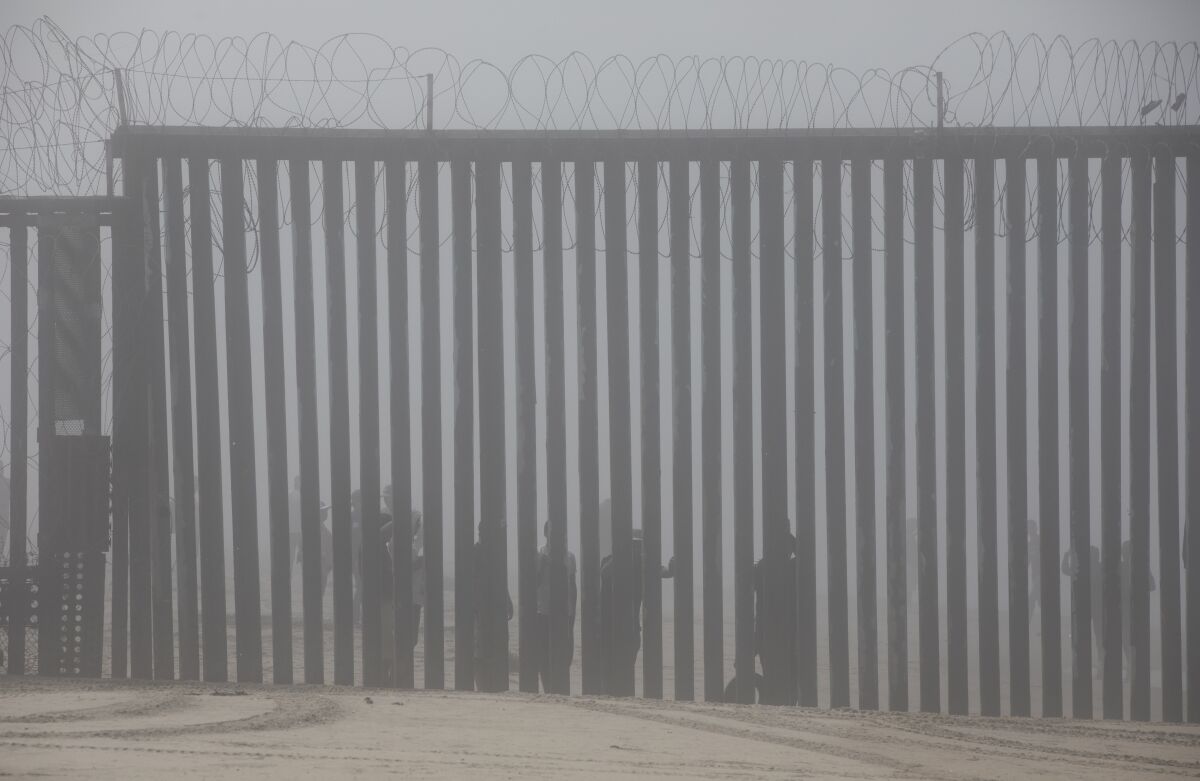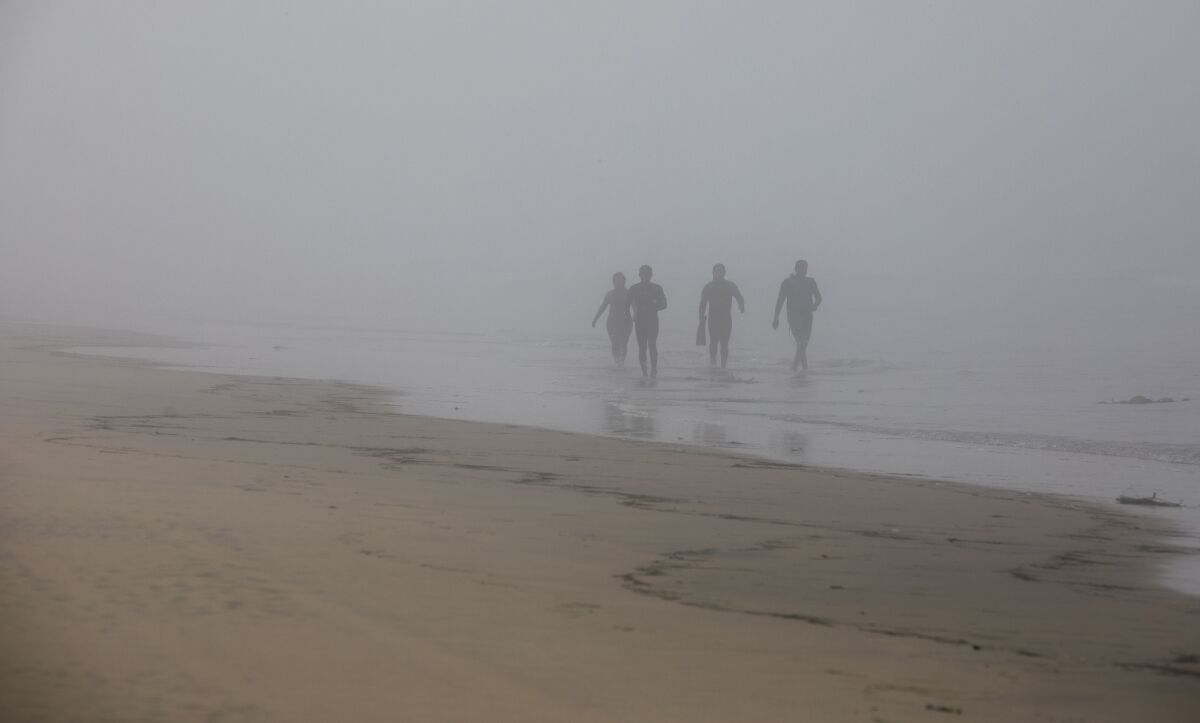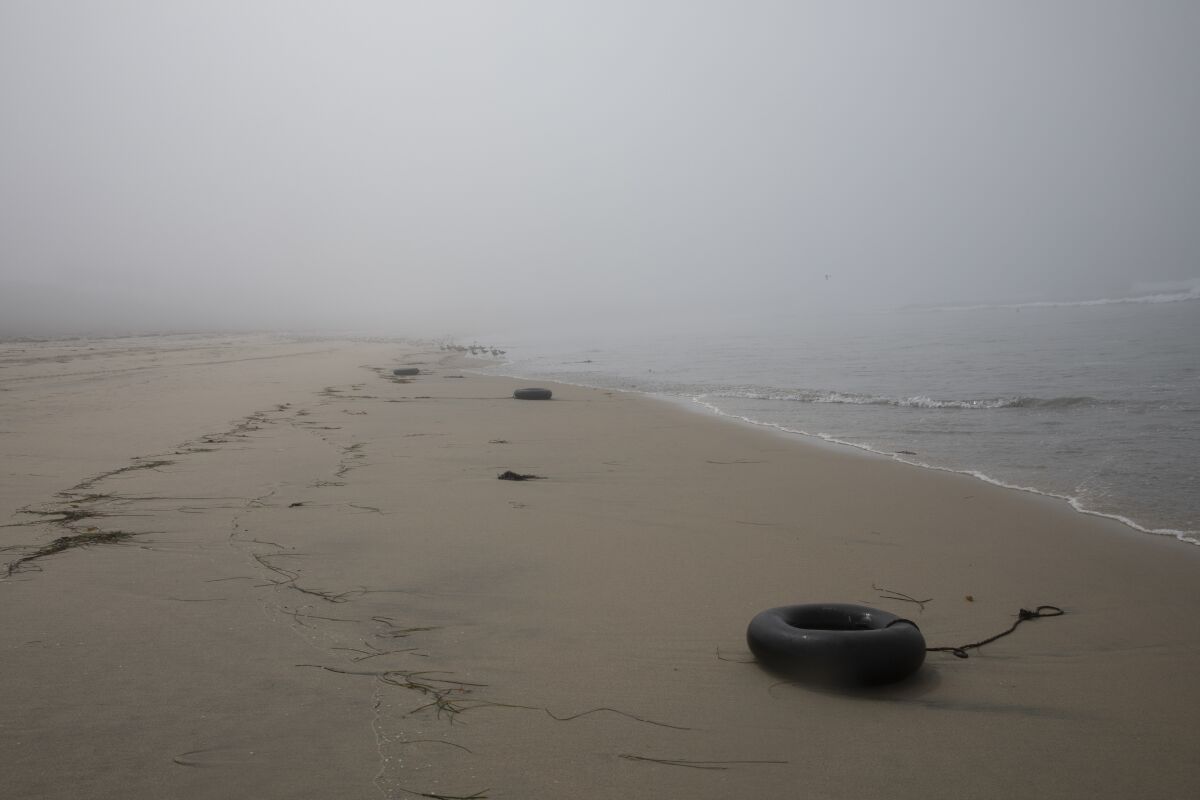Swimming in ominous fog, a group of immigrants swim to American soil

After seeing on social media on Monday how about 50 immigrants from Colombia, Brazil and other Latin American countries tried to cross from Tijuana to San Diego, I asked editors if I could explore the border on the San Diego side of the fence.
Specifically, we heard that immigrants were waiting for hours by the border fence for CBP to process them, and I wanted to see if I could witness the same thing happen with other groups.
I knew the chances were slim, but I was hoping it would be a good learning experience, as I cover more and more boundaries as one of the Union-Tribune visual journalists.
(Anna Ramirez/The San Diego Union-Tribune)
I walked about half a mile on a dirt road near Tijuana River Valley Provincial Park, then followed a chain fence running parallel to the border fence, when a Border Patrolman approached in an SUV.
I asked him if he had a busy day. He told me he was at the beach to help prevent people who tried to cross earlier that day.
I quickly got back to my car, drove to nearby Border Field State Park, and walked to the border where the sea meets.
The fog was so thick that morning, I could barely see three feet in front of me. After about two hours, I lost hope of seeing anyone and started trying to take pictures of the mist and the large flock of seagulls screaming and swarming over me.

(Anna Ramirez/The San Diego Union-Tribune)
As I approached the fence I saw a life jacket and swimming fins. Then I noticed a group of people heading from Tijuana towards the US and I thought it was weird, but I dismissed that feeling. I noticed that they were wearing wetsuits and fins and some kind of flotation device and were heading into the water.

(Anna Ramirez/The San Diego Union-Tribune)
As I got back in the car, I called the immigration reporter, telling her I had no luck finding anyone. When I stopped I saw a man running towards me. I started taking pictures because I thought they might be useful for weather art, and it looked great with the fog. I told him I was a journalist and that I took a picture of him. He said he speaks English, but he started running before I asked his name. I shouted at him, “Wait! What’s your name,” and he replied, “Juan.”

(Anna Ramirez/The San Diego Union-Tribune)
Moments later I saw four other people getting out of the water and walking towards the shore. I did the same: I started taking pictures. When they came, I gave them the same talk, but this time they said they don’t speak English. I asked one of them: “Do you live in Tijuana?” And they answered with a company, “No, in San Diego.” Then they all started running.

(Anna Ramirez/The San Diego Union-Tribune)
At that moment I realized that I had just seen people crossing the border.
A few minutes later, I came across three abandoned buoys on the shore.

(Anna Ramirez/The San Diego Union-Tribune)
I contacted the reporter and explained that these types of crossings are common in foggy conditions because it is difficult for officers to identify people.
When I got back to the border fence, two Border Patrol agents were chatting up the hill, oblivious to Juan and the others heading for the US.
On reflection, the ocean seemed furious that day, and most people would not have attempted swimming in those conditions, at least not for entertainment. One of the things to read about is the lengths people go when crossing a border or even seeing a photo, but seeing it in person made a deeper impression on me than I expected.

“Coffee fanatic. Gamer. Award-winning zombie lover. Student. Hardcore internet advocate. Twitter guru. Subtly charming bacon nerd. Thinker.”











